Jessica Chan

My primary work revolves around a eukaryotic pathway known as RNA interference (RNAi) where small RNA molecules regulate gene expression. As the main enzyme responsible for generating these small RNAs, Dicer measures and cleaves a diverse population of RNA molecules into mature fragments primed to control genes. The two main substrates are hairpin RNAswhich are cut into microRNAs (miRNAs)and long duplex RNAswhich are cut into small interfering RNAs (siRNAs). Although many studies have analyzed Dicers ability to cleave RNA, there are still many unanswered questions about how Dicer selects its […]
Gabrielle Ho

Different protein databases classify and organize proteins based on separate criteria. As a result, the organization and information available on these databases will often vary. By mapping the protein domains between different databases, I can analyze and add new, otherwise not apparent information. During the summer, I am augmenting the computational resources available on the Structural Classification of Proteins (SCOP) database by mapping it to the Uniprot Gene Ontology Annotation Database (Uniprot-GOA) and the Pfam Database. Based on the results of mapping the Pfam database to SCOP, I can uncover […]
Derrek Coleman
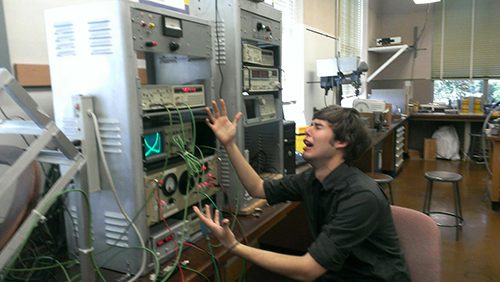
The Large Underground Xenon, or LUX, collaboration has spent the last few years constructing a dual-phase liquid xenon detector which is sensitive enough to detect weakly interacting massive particles (WIMPs), the primary candidate for dark matter. The detector is finally running and has been taking data since February of this year. With the first round of data in hand, I will analyze LUXs current level of performance. I will look for unexpected drops in its photo-detection rates and other signs that previously unaccounted for factors are limiting the detectors efficiency. […]
Emmelyn Hsieh
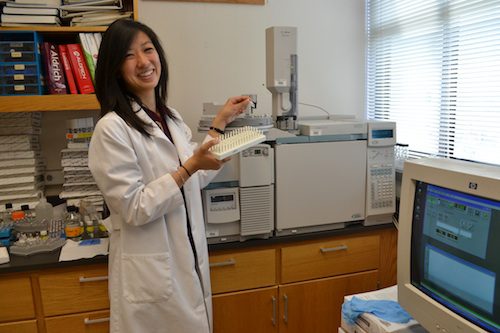
Patients who have experienced severe head trauma are in a state where their brain exhibits impaired glycolysis by a process that is currently not well understood. Because the brain relies on glucose metabolism for energy production, the obstruction of its supply can lead to loss of brain function. Lactate is the final step of the glycolytic pathway, and as a result there has been speculation that infusions of lactate into TBI patients could give the brain another potential source of energy by bypassing glycolysis. For my project this summer, I […]
Kendall Condon
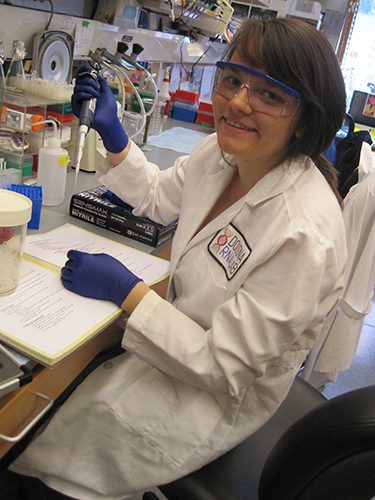
DEAD-box proteins are vital to the central dogma of biology. They are involved in all aspects of RNA biology including ribosome biogenesis, mRNA export, RNA-protein complex remodeling and much more. Since DEAD-box proteins have been implicated in pathways of viral infections, like HIV, and many types of cancers, they are critical to human health. The two most formidable hurdles in researching this family are their highly similar active sites and that most are essential for life. This makes studying individual DEAD-box proteins difficult, so many of their functions remain unclear. […]
Rami Ariss
Cadmium Telluride (CdTe) is an alternative semiconductor to silicon for photovoltaic applications. Its advantageous physical properties allow it to absorb an equal amount of light with a fraction of silicons thickness; this means lower material costs. However, lack of fundamental research renders this material less efficient than silicon. Recent attempts at reducing manufacturing costs of CdTe solar cells investigate solution deposited nanocrystal (NC) films, i.e.semiconductor ink. During solar cell fabrication, CdTe films must be exposed to CdCl2 and heated to improve device performance. My research will investigate the effect of […]
Thamine Dalichaouch
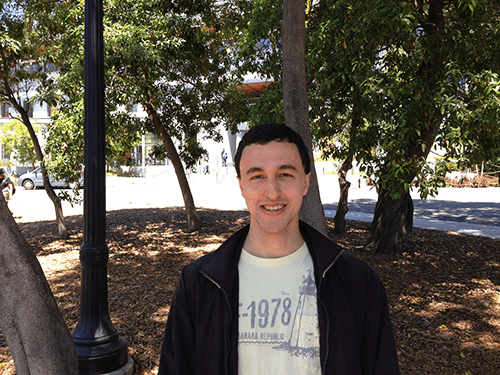
The objective of this work is to study electric field noise from metallic surfaces at low frequencies observed in ultra-low temperature ion traps. This source of noise has been a major issue for ion trapping experiments because it heats up the cold ions several orders of magnitude faster than what was expected. This heating is a serious problem and hinders progress in the use of ions, as dependably controllable qubits, toward a scalable quantum computer. The expected benefits from this research is the determination of the frequency scaling of this […]
Mansee Desai
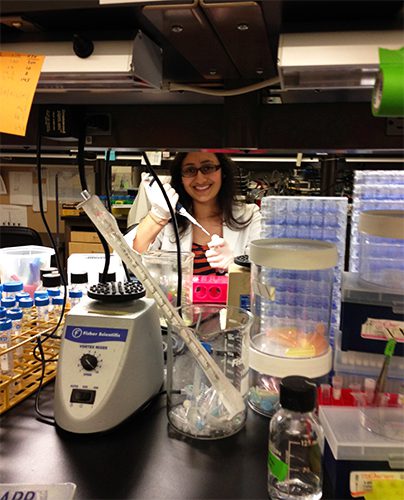
I will be working with the Murine gammaherpesvirus 68 (MHV68), a member of the Herpesviridae family consisting of over one hundred viruses capable of infecting a wide array of hosts. My gene of interest, muSOX, is a viral gene that targets and cleaves cytoplasmic host mRNAs and is the mouse analog of the SOX gene in the human gammaherpesvirus. A former graduate student constructed an MHV68 virus that is defective for host shutoff (HS). The HS virus has a single point mutation R443I and is incapable of targeting and degrading […]
Akash Dixit
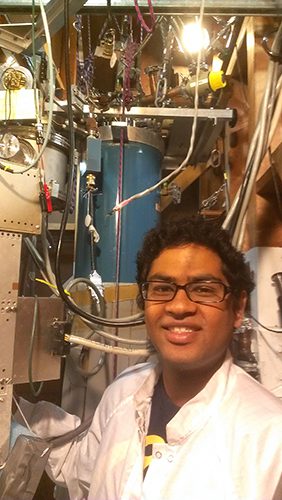
Dark matter is ubiquitous in this universe yet has not been detected directly. The leading candidate particles for dark matter are Weakly Interacting Massive Particles (WIMPs). The Cryogenic Dark Matter Search utilizes measurement of ionization and phonons in order to discriminate between background particles and rare WIMP interactions. Achieving complete charge collection by the ionization readout is challenging due to trapping within the low temperature Germanium detectors. The charge transport experiment will provide great insight into the phenomenon of charge trapping and this information will have wide implications in low […]
Nadir Bilici
Cadmium Telluride (CdTe) is an alternative semiconductor to silicon for photovoltaic applications. Its advantageous physical properties allow it to absorb an equal amount of light with a fraction of silicons thickness; this means lower material costs. However, lack of fundamental research renders this material less efficient than silicon. Recent attempts at reducing manufacturing costs of CdTe solar cells investigate solution deposited nanocrystal (NC) films, i.e.semiconductor ink. During solar cell fabrication, CdTe films must be exposed to CdCl2 and heated to improve device performance. My research will investigate the effect of […]